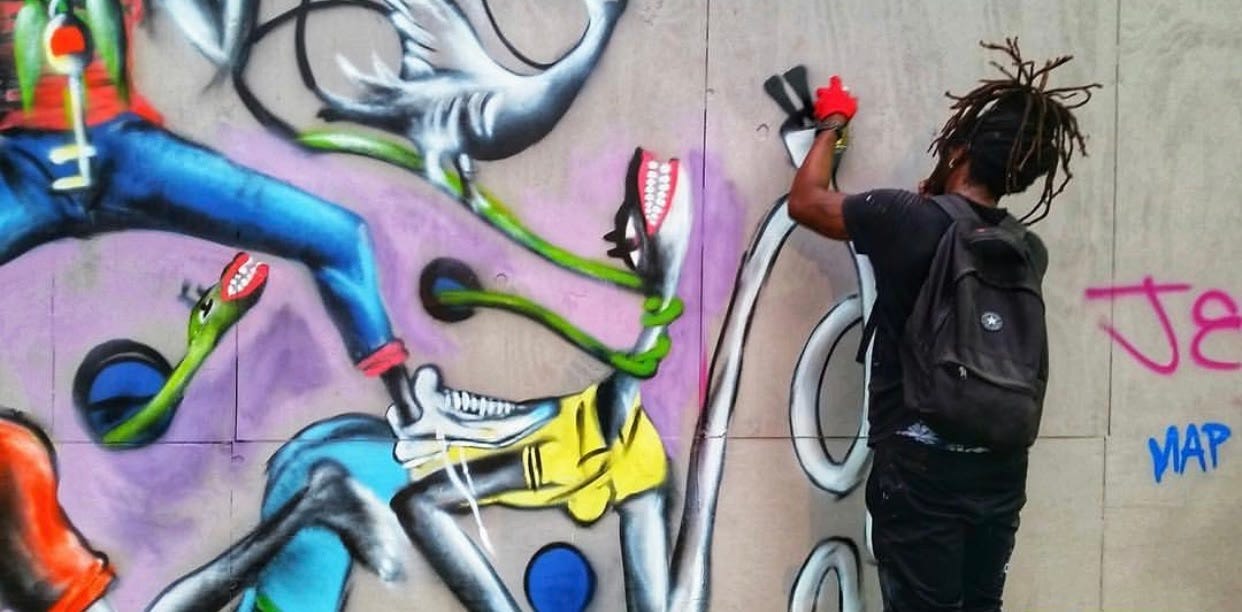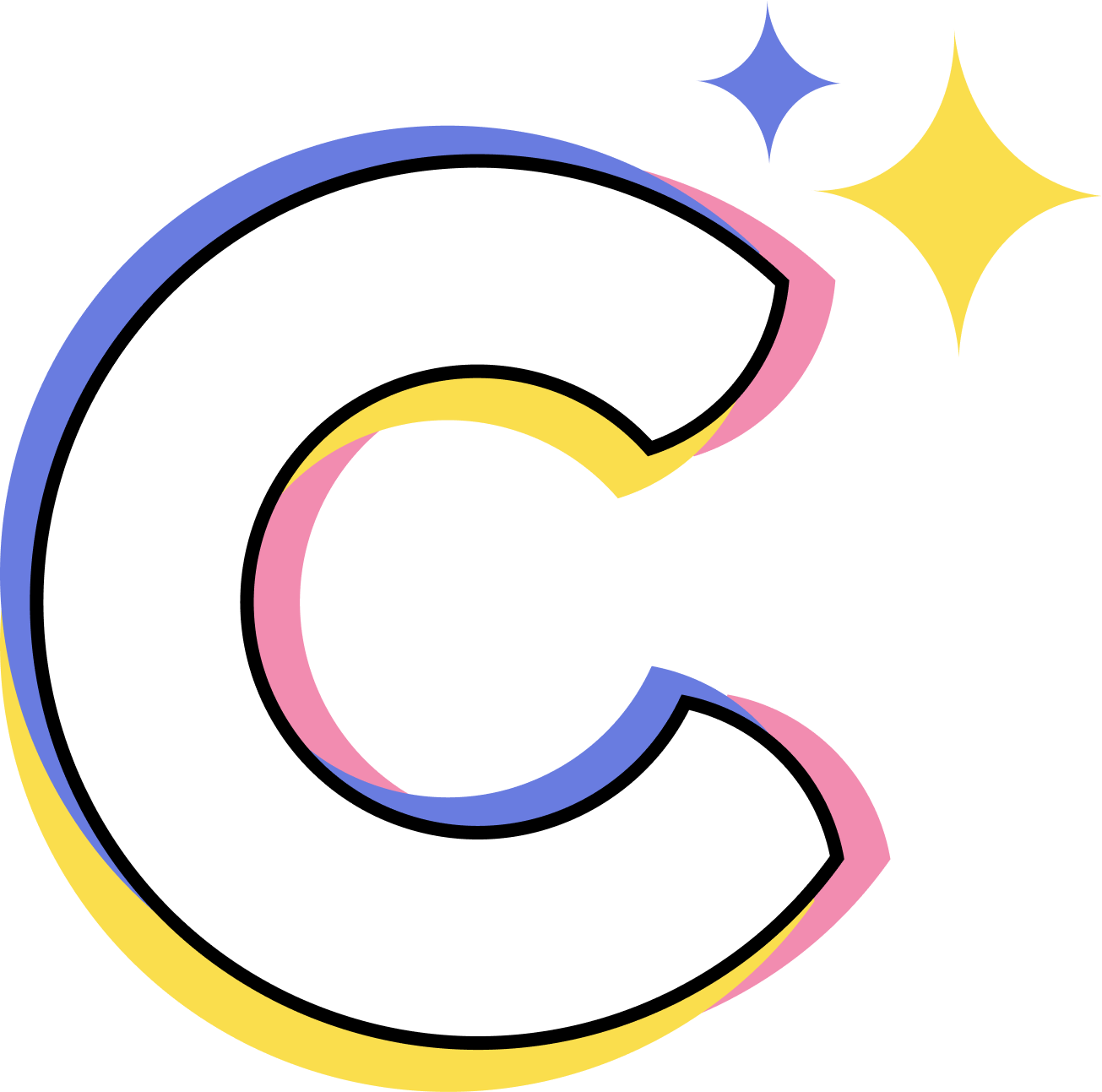💬 Graffiti as a Special Language
Last semester was quite hectic for me, and I’m sure it was for a lot of you as well. We were, and still are, in a pandemic. Despite this, we still had moments we cherished, and classes that perhaps sparked our interest. We are college students after all, continuing to solidify our passions and trying to figure out what we want to do with our lives.
So forgive me as I start off this article by referencing an assignment I had last semester, where I watched a documentary called Style Wars in my “Artists, Ideas and Practices” class.
This documentary was developed by PBS production between 1981 and 1983 mainly in the Bronx. Still cited as a classic piece of hip hop history, it is an unnervingly calm movie capturing a particularly delirious moment – a moment replicated so often in throwback movies and rap songs that seeing it in the comparatively 1:1 ratio of a documentary film can be jarring.
It’s not often that you find an assignment from class that you can actually connect to on a personal, creative level. In the film, the main character, Billy, speaks to the true meaning of graffiti:
“It is not a matter of regular people seeing it or the fact that they can read it… it is a matter of other graffiti writers; we can read it. Normal people are excluded.”
I recognized myself in those words when I look back at the early stages of my career as an artist. When I first started drawing, I would not let just anybody see my artwork.
After I finally decided to share my work with others, I expected it to be a conversation starter about the issue I was trying to capture. To me, compliments were secondary.
However, people always gave me compliments first - without digging deep enough into my work and looking beneath what they have in front of their eyes. I wanted discussion, critiques, and conversation - all of which could only be done with a select few. So, I showed my work to the select few who had the same interests as me, and when we got together, we discussed and critiqued.
My art is also very personal to me, which made me believe for a long time that it was not meant to be shared with the world. In fact, I believed that my art was a language that no one else would understand.
I got this idea from a book that I read called How to Tame a Wild Tongue by Gloria E. Anzaldúa. Anzaldúa wrote about the power of special languages that only some people can understand. She wrote, “For kids like me and people my own age, I picked up...a language of rebellion, against both the Standard English and the Standard Spanish. It is a secret language. Adults of the culture and outsiders cannot understand it.”
The young people that Anzaldúa described had a special language that only they could understand, one they needed in order to express themselves authentically.
I have a special language too, that I believed only fellow artists could understand: the language of graffiti.
🖌️ My Love for Graffiti, Hip-Hop, and Haiti
I grew up around graffiti artists who used the special language of graffiti to raise awareness about things that were happening in my neighborhood of Port-au-Prince, Haiti:
Media and news outlets in Haiti only broadcasted the mainstream views on social issues, which left young people without a language to share their alternative ideas. This led us to create many different languages of our own.
Some of us used large group discussions and others, like me, relied on graffiti that was often inspired by lyrics from conscious hip-hop music. Conscious hip-hop, also referred to as political hip-hop, is a subgenre of hip-hop music that emerged in the 1980s as a way of echoing communities’ cries against the dominant culture on social issues.
The first graffiti I ever made depicted a book with the words “The Message” written on it, and the book was being attacked by two SWAT agents. It was inspired by one of my favorite French hip-hop songs titled “Le Message,” which describes the violence and discrimination that are present in communities like Port-au-Prince.
Graffiti is more than just an act of vandalism. By focusing more on the illegal aspect of graffiti, a lot of people fail to grasp that graffiti is a language of its own. The book A Lexicon of the Indigenous People: Images of Autonomy and Desire says that “In the 70s, graffiti, rapping and break dancing were the main expression in the new young people subculture called hip hop.”
Graffiti is also more than the hip-hop lyrics that inspire it. The Lexicon also says that “We have few gestures that can hold all of our impulses – desire, pain, pleasure, grief, play, violence and tenderness the way art can, simultaneously, and with limitless capacity.”
In my community, graffiti was a reflection of music and a reflection of our environment. And it's always up to the viewer to look at and seek to understand the feelings the artist was trying to convey.
🎨 Delving into My Current Art Journey
My own artistic journey has taken me beyond graffiti, though I continue to rely on the ideas that form the foundations of graffiti: embracing rebellion, hip-hop, and the fact that my art is a special language that takes effort to fully understand.
These ideas come through in my most recent piece, which was the result of a video I saw circulating online in which a police officer ordered his companion dog to attack an unarmed black man. It happened in the wake of George Floy’s death.
My work depicts a corpse laying on the ground and a crying black mother inside a silhouette of a man and a dog. The technique I used is double exposure; it is quite common in photography as well as cinematography. I thought the technique would be appropriate given the context of the piece. By combining the two images together, double exposure tends to create a surreal feeling for the two images to convey a deeper meaning or symbolism.
Even though this drawing is centered around police brutality and violence that is plaguing the black community - as depicted in a lot of conscious rap songs - it is also very personal, as I am no stranger to those problems. The more emotions I poured into talking about those issues, the more I lost my words to express myself.
Perhaps, this even led me to trade my words for graffiti and drawing because I newly understood that there is someone out there who can understand my languages of graffiti and art.
This piece builds from the language of graffiti because of the short messages scrawled in the background of the drawing. It embraces rebellion and draws from hip-hop, because the issues and dialogue that are embedded in this piece articulate resistance to dominant powers.
Most importantly, this piece represents my own unique language as an artist as I open up to the world and finally expect that others might understand.
David Legrand
David Legrand is a sophomore studying Art, Architecture & Planning (AAP) at Cornell University. He specializes in painting and drawing, both inspired by the special language of graffiti that he used to communicate in Haiti. His next goal on his art journey is an exhibition centered black culture and customs.
Did this blog post supercharge your creativity? ⚡
We hope so. And we can’t wait to see what magic you make next. ✨
Take this email as the reason you’ve been searching for to dive into your next creative endeavor, and know that you’ve got a creative community backing you at every step of the way. 🙌
Website | Instagram | Twitter | Facebook | ✉️: cornellcreativescc@gmail.com
✓







🔥🔥🔥🔥